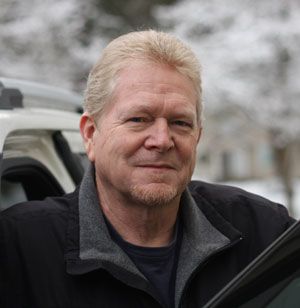Fans of full-time headlights
My column, “Seeing the light,” elicited many responses, answering my query of where readers stand on full-time vehicle lighting. The column was meant to open debate on the merits or faults of daytime headlight use.
But while nearly 20 drivers responded, the debate was non-existent, or at least decidedly one-sided. In the big picture, it’s a small sampling, but the total lack of opposition makes one wonder why DRLs (Daytime Running Lights) are not standard equipment on all vehicles.
Roads with bad safety records are regularly posted with “Turn on Headlights for Safety.” If it’s safer (easier to see others) on those roads, then why not implement that level of safety everywhere? And, as reader R.H. wondered: If a headlight law makes sense for motorcycles, why doesn’t the same logic apply to all motor vehicles? Good questions.
A philosophical treatise from S.L. noted, “I’ve been driving with my headlights always on for the past 225K miles....I read the stats way back then (1995), before the ubiquitous use of hand held computers masquerading as telephones. What interests me most, is contrary to safety statistics proving DRLs are a simple safety precaution, the USA gives citizens the right to choose safer or less safe options to something so benign as always driving with your headlights on, instead of producing only vehicles which default to headlights on, mode. Silly. However, this little slice of American freedom is emblematic of the larger picture which American freedom takes prominence over sound scientific research, or examples found in our immediate world.”
L.T., with an expert background, relayed some thoughts on the subject, writing, “As a former insurance accident investigator, and also a service rep for an import car manufacturer, I can categorically state the having headlights on at all times does reduce the frequency of accidents.”
He added, “What a lot of drivers don’t seem to realize is that headlights are as much (maybe more, sometimes) for the purpose of your car being seen by other drivers, as opposed to your being able to see the road. Many seem to think that they don’t need to turn on their headlights because they feel that they can adequately see the road and their surroundings. How wrong they are!”
In my column, I mentioned that sometimes cars operating in daylight with illuminated headlamps can “cloak” cars without lit lights, making them nearly invisible. L.T. had an opinion on that too, stating, “Yes, when only some cars have their lights on, it exacerbates the problem of seeing the ones that do not. But even that reduces the number of cars you cannot see, so the likelihood of hitting one is also reduced accordingly.”
Then L.T. summed up the beliefs of the other 19 respondents by adding the understatement, “Obviously, I am a very strong proponent of all cars having lights on all the time.”
So, to be legal, turn on your headlights from 30 minutes after sunset to 30 minutes before sunrise. To be safer, though, according to readers and safety studies, use them during daylight hours. To me, it improves safety on two-lane state routes (where the greatest numbers of fatal accidents occur), so if you wish to experiment, that’s a good place to start. As mentioned, you will regularly see signs on those roads reminding you to light up.
With winter’s compromised daylight, be sure you can be seen.
Readers may contact Bill Love via e-mail at precisiondriving@spokesman.com.
